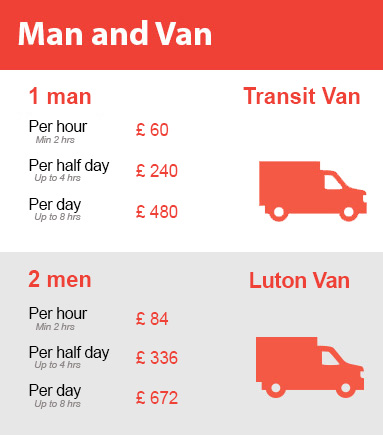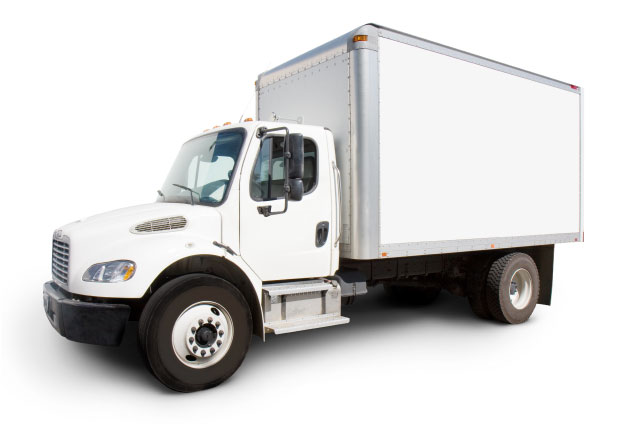Get Ready to Move: Effective Packing Techniques for Your House
Posted on 15/06/2025
Get Ready to Move: Effective Packing Techniques for Your House
Moving to a new home is a significant milestone, but it often comes with mixed emotions and stress. However, utilizing effective packing techniques for your house can transform your move into a smooth, organized, and even enjoyable process. This comprehensive guide will provide you with expert strategies and tips to ensure your house move is streamlined from start to finish.

Why Packing Effectively Matters When Moving House
Packing isn't simply about putting items into boxes. Smart packing techniques can help minimize damage, save you time, reduce costs, and lower stress throughout your entire moving journey. With the right approach, unpacking and settling into your new home becomes much easier and more efficient.
- Reduces the risk of lost or damaged items
- Saves time during both packing and unpacking
- Cuts down on moving expenses and clutter
- Makes the process more organized and less overwhelming
Ready to discover expert house packing methods that will make your next move hassle-free? Let's dive in!
Pre-Packing Steps: Getting Organized
1. Make a Moving Timeline
Before you start packing, plan your move carefully. Set a moving date, book your moving company (if applicable), and create a detailed checklist of tasks leading up to the move. Some tasks to consider:
- Purchase or gather packing supplies: boxes of various sizes, bubble wrap, packing paper, sturdy tape, and labels.
- Arrange time off from work for moving day, if necessary.
- Notify utility companies, change your address, and update your details with subscription services.
2. Declutter Before You Pack
Packing gets easier when you have less. Before you even think about boxes, sort through every room and declutter. Review your clothes, kitchenwares, books, toys, and other possessions.
- Keep - Only items you need or truly love.
- Sell - Host a garage sale or use online marketplaces for valuable items you no longer want.
- Donate - To local shelters or charities.
- Discard - Broken or unusable items.
An organized decluttering session lightens your moving load and makes packing more efficient.
Packing Materials: What You'll Need for a Stress-Free Move
Effective house packing starts with having the right materials on hand. Stock up on the following:
- Sturdy cardboard boxes in small, medium, and large sizes
- Wardrobe boxes for hanging clothes
- Plastic bins for fragile or high-value items
- Bubble wrap and packing paper for breakables
- Heavy-duty packing tape and tape dispensers
- Permanent markers and colored labels
- Furniture blankets and stretch wrap for large items
- Ziplock bags and twist ties for small components
Pro Tip: Reuse original boxes for electronics and appliances when possible, as they offer the best fit and protection.
Room-by-Room Packing Techniques for Your House
Kitchen Packing Strategies
- Start by packing rarely used appliances and utensils first.
- For glassware and dishes: Wrap individually in packing paper or bubble wrap and place vertically in strong boxes marked "Fragile." Stuff gaps with towels or paper.
- Group pots, pans, and plastic containers by size for efficient packing.
- Seal open spice containers and bottles with plastic wrap under the caps to prevent spills.
Living Room Packing Techniques
- Disassemble furniture where possible to save space and prevent damage.
- Use blankets or bubble wrap to protect delicate items such as lamps and mirrors.
- Pack books in small, sturdy boxes to make them easier to carry.
- Keep all electronic cables and remotes with their respective devices; put hardware in labeled bags.
Bedroom Packing Methods
- Use wardrobe boxes for hanging clothes to keep them wrinkle-free.
- Pack off-season items and rarely worn clothing first.
- Keep bedding and linens in large bags or plastic bins; label by room for easy access.
- For jewelry, use egg cartons or pill organizers to keep small items separate and tangle-free.
Bathroom Packing Techniques
- Sort through toiletries and dispose of anything outdated.
- Wrap liquid items in plastic bags and seal tightly to prevent leakage.
- Keep daily essentials in a separate, clearly labeled "First Night" box or bag for easy access after the move.
Garage and Outdoor Item Packing
- Use sturdy boxes for small tools and group similar items together.
- Drain fuel from lawnmowers or other equipment before moving.
- Bundle garden tools tightly and tape them together for easier handling.
- Protect sharp blades with cardboard covers.
Top Packing Tips from Moving Professionals
1. Pack Heavy Items in Small Boxes
Keep each box a manageable weight--ideally under 50 pounds. Place books and heavy objects in smaller boxes to prevent injury and box breakage.
2. Don't Leave Empty Spaces in Boxes
Fill any gaps with towels, clothing, or crumpled packing paper. This prevents items from shifting and possibly breaking during transit.
3. Clearly Label Every Box
On at least two sides and the top, write not only the room and contents, but also note if the box contains fragile items. For greater convenience, use color-coded labels to match boxes to specific rooms in your new house.
4. Use a Numbering System
Assign a number to each box and keep a master inventory list so you always know what's inside each box, making tracking and unpacking in your new home more efficient.
5. Pack a Separate Essentials Box
- Each family member should pack an overnight bag with clothes, toiletries, chargers, and medications.
- Pack a box with toilet paper, cleaning supplies, snacks, light bulbs, and tools for immediate use upon arrival at your new home.
Advanced Packing Techniques for Fragile Items
How to Pack Glassware and Dishes
- Wrap each item individually with packing paper or bubble wrap.
- Place plates and dishes vertically in boxes for greater strength.
- Use dividers or cell packs to separate glasses and stemware.
- Fill empty spaces with soft material (towels, paper, foam peanuts) for cushioning.
Packing Artwork, Mirrors, and TVs
- Use specialty picture boxes or create a sandwich of cardboard to protect flat items.
- Wrap paintings and mirrors in paper, then bubble wrap, and mark boxes as "Fragile."
- Store televisions upright and use original packaging if available; otherwise, wrap and cushion well.
Handling Important Documents and Valuables
- Keep passports, birth certificates, jewelry, and critical personal items with you during the move.
- Use a fireproof and waterproof lockbox for irreplaceable belongings.
- Back up digital files or move hard drives and computers personally.
Moving Day: Keeping the Packing Process on Track
- Have all boxes packed and labeled before movers arrive or loading begins.
- Leave boxes in the rooms they were packed, but create clear walkways for moving large furniture.
- Make sure every box is sealed and nothing is left breakable or loose.
- Supply moving teams or helpers with your box numbering list and color-coding guide.
Tip: Keep your phone charged and have all moving contacts (moving company, landlord/agent, emergency numbers) easily accessible.
Unpacking: Making Your New House a Home
Unpacking Strategies to Get Settled Quickly
- Start with the essentials box for immediate needs.
- Unpack room by room, starting with the kitchen and bathrooms for daily functionality.
- Check your numbered inventory to ensure all boxes arrived safely.
- Break down and recycle boxes as you go to minimize clutter.
Note: Pace yourself and prioritize. There's no need to unpack everything in one day. Focus on high-traffic and high-need areas first.
Common Packing Mistakes to Avoid
- Procrastinating or underestimating how long packing takes
- Using flimsy or damaged boxes
- Overloading boxes with heavy items
- Failing to label boxes or keep an inventory list
- Neglecting to pack an essentials box
- Overlooking the importance of cushioning fragile items
Avoiding these errors can help protect your belongings and reduce the hassle of your move.
Sustainable Packing and Moving Tips
- Borrow or rent reusable moving crates to cut down on cardboard waste.
- Use towels, linens, and clothing as packing material instead of bubble wrap.
- Recycle boxes and paper after your move, or offer them to others via community groups.
- Donate or responsibly dispose of unwanted items to keep your move eco-friendly.

Final Thoughts: Master Your House Move with Proven Packing Techniques
Getting ready to move doesn't have to be chaotic. By following these effective packing techniques for your house--from early organization and decluttering, to using the best materials, to packing your belongings safely--your next relocation will be simpler and less stressful.
Remember: Preparation is key. Starting early, staying organized, and paying attention to details are the foundation of a successful and stress-free move. Whether you're moving across town or across the country, these comprehensive packing strategies will help ensure your belongings arrive safely--ready for a fresh start in your new home.
Ready to take on your move? Gather your supplies, put these packing techniques into action, and enjoy a smooth, efficient, and satisfying move to your new house!
Useful Packing Resources and Services
- Professional packing and moving companies often offer packing services if you want expert help.
- Online calculators are available to help you estimate how many boxes you'll need for your house.
- Plenty of free downloadable house moving checklists can help keep you on track.
With these tips and resources, you can move house with confidence--and settle into your new space with ease!





